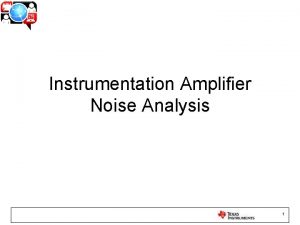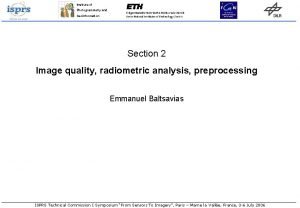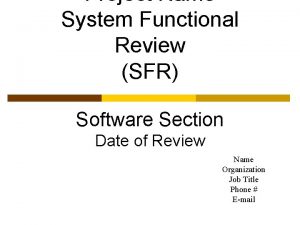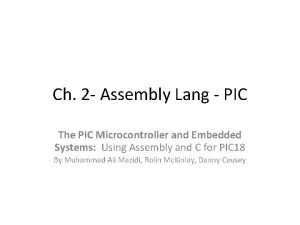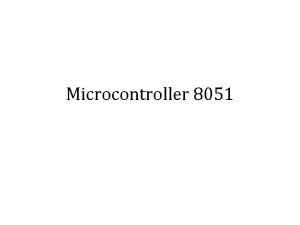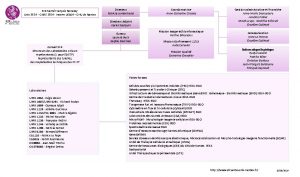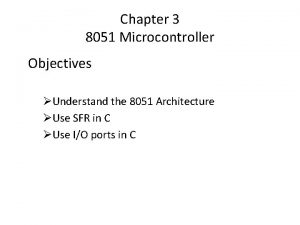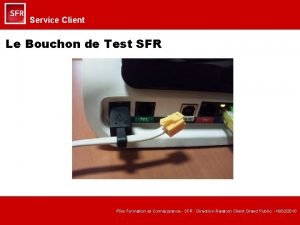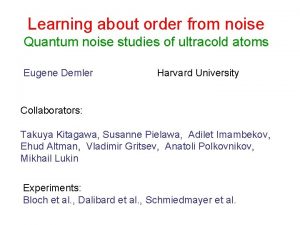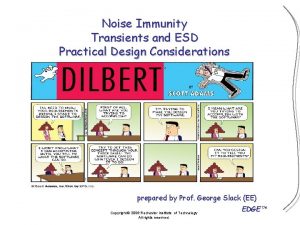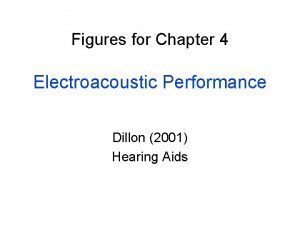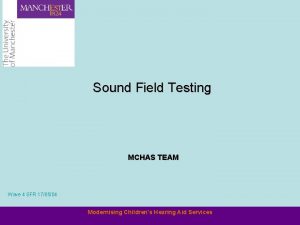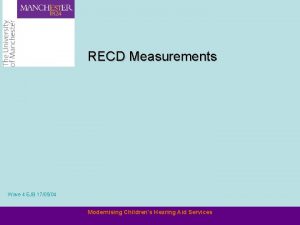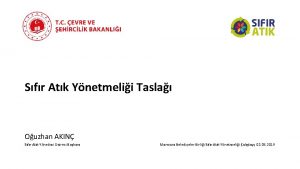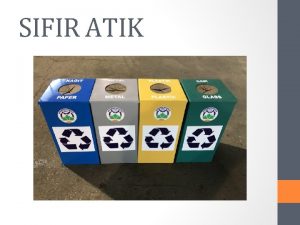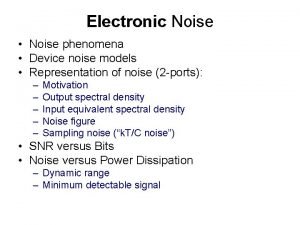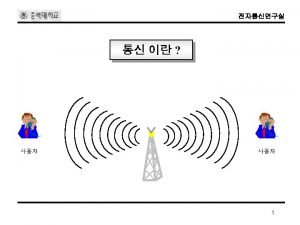NOISE REDUCTION STRATEGIES Wave 4 SFR 170504 MCHAS









































- Slides: 41

NOISE REDUCTION STRATEGIES Wave 4 SFR 17/05/04 MCHAS Modernising Children’s Hearing Aid Services

NOISE REDUCTION STRATEGIES ØMulti-microphone technology ØNoise Reduction Algorithms ØExpansion/Squelch ØMulti-channel compression i. e. BILL MCHAS Modernising Children’s Hearing Aid Services

What’s The Problem? Ø Interference from background noise represents the problem Ø To improve speech perception in noise, hearing aids need to improve the signal-to-noise ratio Ø Hearing impaired individuals require a greater S/N ratio than normal hearing listeners Ø Hearing aids with omnidirectional microphones amplify sounds from all directions in the listeners environment equally MCHAS Modernising Children’s Hearing Aid Services

Multi-Microphone Technology ØDirectional amplification is the most effective way to improve signal-to-noise-ratios in hearing aids. Effect of decreasing noise Dillon 2001 BKB sentences: Moore, Johnson, Clark & Pluvinage, 1992 MCHAS Modernising Children’s Hearing Aid Services

ØDirectional microphones enhance the hearing instrument’s sensitivity to sounds from desired direction over sound from other directions. ØIt is the only technology that can effectively distinguish between desired and undesired speech signals. It is therefore quite effective in so called ‘cocktail party’ situations. MCHAS Modernising Children’s Hearing Aid Services

Directional Microphone Rear sounds entering back port are electronically delayed so……. …. . rear sounds entering the front port impinge on the diaphragm at the same time. Hence the diaphragm does not move. Important information Adapted from Dilion 2001 MCHAS Modernising Children’s Hearing Aid Services Dillon 2001

Dual Microphones ØSimilar principle to single directional microphone but has two microphones with 2 separate ports. ØImportant users have the option to switch between omni-directional & directional amplification. MCHAS Modernising Children’s Hearing Aid Services

ØThe 2 microphones can be either: – 2 omni-directional ones whose outputs are coupled with electronic time delay and subtraction components to make them directional. When omni- direction is needed just one of the microphones is used. – 1 directional microphone (which has a front and rear port) and the other an omnidirectional microphone. ØThe directional sensitivity of a microphone is usually indicated on a polar plot. MCHAS Modernising Children’s Hearing Aid Services

MCHAS Modernising Children’s Hearing Aid Services

Microphone Arrays ØFIXED MICROPHONE ARRAYS ØCurrent hearing aids implement variable polar patterns in one of two ways ØThe first method introduces circuitry that allows either the user or the hearing aid programmer to select the desired directional pattern (presently, none of the aids on contract have this option) ØSuch a system means that there will be the same polar pattern in all situations MCHAS Modernising Children’s Hearing Aid Services

Microphone Arrays Ø ADAPTIVE MICROPHONE ARRAYS Ø The second method is designed to Ø adaptively switch between polar patterns in response to the listening environment. In noisy environments adaptive instruments automatically shift polar patterns in an attempt to maximize S/N ratio in the presence of other noise sources. MCHAS Modernising Children’s Hearing Aid Services

Microphone Arrays Ø It may appear that adaptive directional processing has the potential to improve speech recognition across noisy environments Ø However, little evidence to suggest more beneficial than fixed directional processing Ø Ricketts & Henry (2002) found advantages only in specific environmental listening situations Ø Bentler et al (2003) found directional better than omnidirectional but adaptive no better than fixed. MCHAS Modernising Children’s Hearing Aid Services

A Word of Caution ØIncreased circuit noise in directional mode ØLess effective as speaker-listener distance increases ØEchoes/reverberation ØMicrophone drift ØDirt! MCHAS Modernising Children’s Hearing Aid Services

Patient selection ØEveryone benefits from increased SNR. ØYounger children must be able to hear sounds from all directions so must have access to omni-directional microphone. ØDirectional depends on maturity ØThose with good low frequency hearing will hear low frequency noise through vents therefore the benefit of the directional microphone will be reduced. MCHAS Modernising Children’s Hearing Aid Services

Phonak Aero 211, 311 & 413 AZ Ø Provides omnidirectional and fixed directional (supercardiod) microphone performance. Either microphone can be implemented in specific programs. MCHAS Modernising Children’s Hearing Aid Services

Danalogic 283 D Ø Provides omnidirectional and fixed directional (hypercardiod) microphone performance. Accessible in all programs. MCHAS Modernising Children’s Hearing Aid Services

Prisma 2 M & 2 D SP ØDirectional microphone accessible in both channels. ØFixed supercardiod ØSelf calibrating to avoid microphone drift (uses 2 omnidirectional mics coupled together) MCHAS Modernising Children’s Hearing Aid Services

Oticon Spirit II D ØDirectional in program 2 only, and can be disabled. ØFixed supercardiod array. ØIn program 2, can access different degrees of LF cut. MCHAS Modernising Children’s Hearing Aid Services

Noise Reduction Algorithms Ø 2 types of noise reduction systems ØModulation Detection & Synchrony detection ØWe will concentrate on modulation detection as it is far more common at present. MCHAS Modernising Children’s Hearing Aid Services

Modulation Detection ØUnderlying algorithms may vary between manufacturer’s but overall aim is to provide improved listener comfort and possibly improved speech intelligibility in background noise. ØCommon to all algorithms is this need to identify which signal is noise and which is speech. MCHAS Modernising Children’s Hearing Aid Services

Modulation Detection ØA speech/non speech detector analyses fluctuations in signal amplitude. ØSpeech & noise envelopes fluctuate in a well characterised manner: – Speech modulations tend to be slow and have big amplitude fluctuations. – Noise modulations tend to be more constant with rapid and smaller fluctuations. MCHAS Modernising Children’s Hearing Aid Services

Envelope of speech + noise MCHAS Modernising Children’s Hearing Aid Services

Modulation Detection Ø The precise way in which the hearing aid processes the two signals will differ depending on the algorithm. Ø One common approach is to: 1. Estimate when the speech signal is present in each channel. 2. If the amplitude envelope at a channel’s output is characteristic of speech the gain in that channel remains unaltered. MCHAS Modernising Children’s Hearing Aid Services

Modulation Detection 3. If the envelope is relatively constant then the signal is assumed to be noise and the gain for that channel is reduced. 4. If more noise is detected than speech at a certain channel, then the gain will also be reduced. MCHAS Modernising Children’s Hearing Aid Services

ØImportant points to note: – If the unwanted signal has similar fluctuations to speech, then it is unlikely to be attenuated. – Best results occur with steady state noise that has a narrow frequency band, or is of low frequency (to reduce the risk of upward spread of masking) – If any other ‘constant’ amplitude signals (e. g. pure tones) are identified then they will also be treated as a ‘noise’ signal and be attenuated. This means that pure tones should not be used to either set or test the hearing aid, unless the noise reduction feature has been turned off. MCHAS Modernising Children’s Hearing Aid Services

Modulation Detection: Advantages and Limitations ØADVANTAGE: Channel specific gain reductions to ensure comfort whenever noise is present ØLIMITATION: Cannot distinguish between noise only versus speech plus noise Tryanski & Pogash (AAA 2204) MCHAS Modernising Children’s Hearing Aid Services

Synchrony Detection ØAssumption: you can find speech versus noise but you cannot separate them ØDesigned to look for the unique structure of speech (energy) ØMaintains full response whenever speech is present…. only goes into comfort mode when speech is no longer present Tyranski & Pogash (AAA 2004) MCHAS Modernising Children’s Hearing Aid Services

Synchrony Detection: Advantages & Limitations ØADVANTAGE: Can protect audibility of speech whenever speech is present ØLIMITATION: Anytime speech is present there will be no comfort-based changes, even if noise present and high level Tyranski & Pogash (AAA 2004) MCHAS Modernising Children’s Hearing Aid Services

The Future of Noise Reduction? One company have recently launched a system that combines the two……? ? MCHAS Modernising Children’s Hearing Aid Services

Conclusions Ø Very little research on NR systems and none at all with the paediatric population Ø Alcantara et al (2003) found there to be no improvement in sound quality or listening comfort with noise reduction turned on Ø Boymans & Dreschler (2000) found no extra benefit with NR & Directional when compared to directional alone Ø Therefore, research published to date would suggest that directional microphone systems lead to a better improvement in the S/N ratio MCHAS Modernising Children’s Hearing Aid Services

Phonak Aero 211 AZ, 311 AZ & Supero 413 digital Noise Canceler (d. NC) Ø Light indicates up to 3 d. B gain Ø Ø Ø reduction Moderate indicates up to 6 d. B gain reduction Strong indicates up to 12 d. B gain reduction OFF deactivates the d. NC in any program MCHAS Modernising Children’s Hearing Aid Services

Danalogic speech/ noise analysis in 14 frequency bands Noise Speech Speech Speech Noise reduced gain normal gain MCHAS Modernising Children’s Hearing Aid Services reduced gain

Danalogic 283 D Noise Reduction ØUses modulation or level fluctuations to identify ‘speech’ from noise. Noise Reduction either ON or OFF MCHAS Modernising Children’s Hearing Aid Services

Prisma 2 M & 2 D SP Ø Can be deactivated. Ø Reduction of gain can be altered to ‘min=12 d. B’, ‘med=18 d. B’ and ‘max=24 d. B’. Defaults to min. Ø Gain reduction is prioritised in channel 1 & 4. Off Min Med Max C 1 min med max C 2 min med C 3 min med C 4 min med max MCHAS Modernising Children’s Hearing Aid Services

Starkey Strata 312 ØOff = 0 d. B reduction ØMin = Up to a 10 d. B channel gain reduction (default) ØMax = Up to a 20 d. B channel gain reduction MCHAS Modernising Children’s Hearing Aid Services

Oticon Spirit II ØNo control over settings. ØIdentifies speech & noise signals based on modulation index. ØIf signal characteristic of noise the release time will be delayed by up to 4 times. If characteristic of speech there will be no change in release time. MCHAS Modernising Children’s Hearing Aid Services

Expansion/Squelch ØExpansion or squelch occurs when the compression ratio is less than 1: 1, therefore gain decreases as the input level decreases. ØIt is useful for decreasing the audibility of very low level sounds. Good as long as ALL inaudible sounds are unwanted e. g. microphone internal noise, computer hum. MCHAS Modernising Children’s Hearing Aid Services

Expansion & Squelch ØBy removing low level electronic noises it can be thought of as a low level noise reduction strategy. ØImportant to distinguish between ‘true noise reduction algorithms’ and squelch. ØNHS DSP Aids with expansion/squelch: – Phonak Aero, Oticon Spirit II, Starkey Strata. MCHAS Modernising Children’s Hearing Aid Services

Multi-channel compression- BILL ØBILL compression circuits were designed to improve speech intelligibility in background noise by providing more gain for soft low frequency sounds than for loud low frequency sounds. ØBased on the premise that background noise is predominantly low frequency, quite loud and hence would be attenuated while high frequency sounds would remain unaffected. MCHAS Modernising Children’s Hearing Aid Services

Multi-channel compression- BILL ØAny aid that has…… – Multi-channel compression – Adjustable kneepoints – Adjustable compression ratios ………. could be configured to a BILL response. MCHAS Modernising Children’s Hearing Aid Services

Questions? MCHAS Modernising Children’s Hearing Aid Services
 Mchas
Mchas Companding quantization
Companding quantization Instrumentation amplifier noise reduction
Instrumentation amplifier noise reduction Noise reduction
Noise reduction System functional review
System functional review Wreg pic
Wreg pic Pcon register in 8051
Pcon register in 8051 Sfr bonamy
Sfr bonamy Ie register in 8051
Ie register in 8051 Testsfr
Testsfr Cost reduction strategies
Cost reduction strategies Risk reduction strategies for new entry exploitation
Risk reduction strategies for new entry exploitation Harm reduction strategies
Harm reduction strategies Risk reduction strategies for new entry exploitation
Risk reduction strategies for new entry exploitation Risk reduction strategies for new entry exploitation
Risk reduction strategies for new entry exploitation Pharmacy cost reduction strategies
Pharmacy cost reduction strategies Compare and contrast transverse and longitudinal waves
Compare and contrast transverse and longitudinal waves Full wave rectified sine wave fourier series
Full wave rectified sine wave fourier series Sound is a transverse wave true or false
Sound is a transverse wave true or false Mechanical waves vs electromagnetic waves venn diagram
Mechanical waves vs electromagnetic waves venn diagram Half wave rectifier definition
Half wave rectifier definition Wave wave repeating
Wave wave repeating What is a semiconductor used for
What is a semiconductor used for Example mechanical waves
Example mechanical waves Bridge rectifier
Bridge rectifier The wave chapter 10
The wave chapter 10 Difference between full wave and half wave rectifier
Difference between full wave and half wave rectifier Velocity frequency wavelength triangle
Velocity frequency wavelength triangle Determining the arrival times between p-wave and s-wave
Determining the arrival times between p-wave and s-wave What does a wave possess a quarter wave symmetry
What does a wave possess a quarter wave symmetry Median
Median The three phases of diesel ignition include
The three phases of diesel ignition include Is noise pollution
Is noise pollution Psychological noise in communication
Psychological noise in communication Order from noise
Order from noise Pros of linear model of communication
Pros of linear model of communication Youtube countable and uncountable nouns
Youtube countable and uncountable nouns Why is communication a process
Why is communication a process Adaptive noise immunity
Adaptive noise immunity Noise barrier
Noise barrier Equivalent input noise
Equivalent input noise 8 effects of water pollution
8 effects of water pollution


